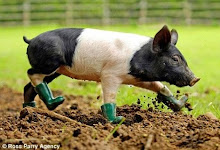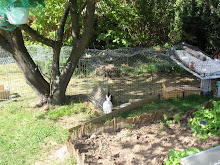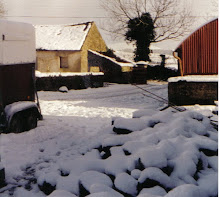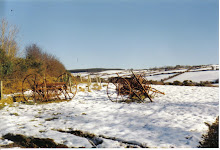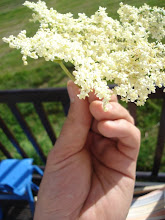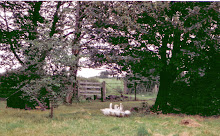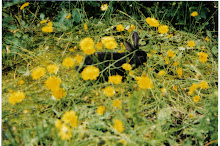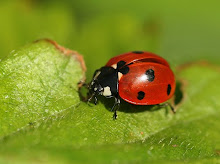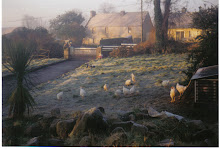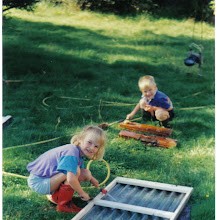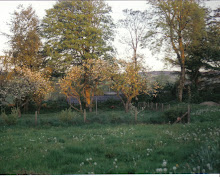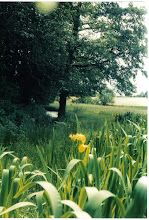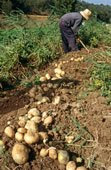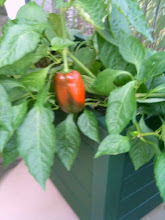Friday, April 30, 2010
Which products to buy organic
Just stumbled across this little handy picture guide in an article by Ronnie Citron-Fink on Care2.com. http://www.care2.com/greenliving/organic-revisited-a-free-cheat-sheet-for-buying-organic.html Excellent website for matters organic by the way. While I don't agree with her that the jury is still out whether organic products are healthier, I found this gadget useful. If you have an iphone, you can even download it as an ap.
Saturday, April 24, 2010
Hexane in our organic foods?
As I've done before, current political developments regarding food, environmental, and health issues urge me to take a stand. Being an avid organic fan and promoter I do not want Hexane in my so-called organic veggie burgers. This unsettling piece of information is frightening because of the extent of what food producers do to consumers here in the USA without the requirement of declaring ingredients and production methods. I don't want to spoil your appetite, but the attached links are worth reading and signing the 2 petitions.
The other one concerns a proposed bill which can still be stopped:As written now, the legislation is a big gift to the industrial food producers, and a drastic blow against small farms. Come to the rescue: Unless it is amended, the Food Safety Modernization Act will regulate our local food sources out of business.
Now is the time to come to the rescue of the party. Thanks.
The other one concerns a proposed bill which can still be stopped:As written now, the legislation is a big gift to the industrial food producers, and a drastic blow against small farms. Come to the rescue: Unless it is amended, the Food Safety Modernization Act will regulate our local food sources out of business.
Now is the time to come to the rescue of the party. Thanks.
Wednesday, April 21, 2010
Happy Earthday!
Let's enjoy the earth as long as it lasts...silly? With the threats to climate, endangered species and pollution all around us I think it's a realistic danger; if not for our generation, at least for those who come after us after us. I lived an organic, self-sufficient life for about 10 years. As you may have figured out I left that lifestyle and marriage a while ago and lapsed into "normal" buying and living habits.
Now, back to growing my own produce and total awareness of how the earth and our health are connected, I'd like to promote Earth Day: to buy locally and organically. Not only does it help our local economy but also the environment. Instead of hauling i.e. flying produce around the world, take advantage of what is in season and available in a shop near you.
Just this short note today. Amy is here for a visit in the land of plenty that is environmentally challenged. Regarding the insect repellents I wrote about a few weeks back, in her memory not only did we scrape off the slugs from underneath the board in the vegetable garden.We also put them in a jar, ground them up, and sprinkled them between the rows of veggies. So now for you...How could I forget?
No wonder Amy is still traumatized by slugs.
Now, back to growing my own produce and total awareness of how the earth and our health are connected, I'd like to promote Earth Day: to buy locally and organically. Not only does it help our local economy but also the environment. Instead of hauling i.e. flying produce around the world, take advantage of what is in season and available in a shop near you.
Just this short note today. Amy is here for a visit in the land of plenty that is environmentally challenged. Regarding the insect repellents I wrote about a few weeks back, in her memory not only did we scrape off the slugs from underneath the board in the vegetable garden.We also put them in a jar, ground them up, and sprinkled them between the rows of veggies. So now for you...How could I forget?
No wonder Amy is still traumatized by slugs.
Thursday, April 8, 2010
Benny Bunny
One Saturday morning I drove into Limerick. I had heard they had a fresh market and an organic shop: Green Acres, named after a popular TV show I didn’t know. The actual market was not much to write home about, different to the exquisite fresh and live displays we have in most German towns. I spotted a little black rabbit that I took home as a surprise for my kids.
They were ecstatic and called him Benny Bunny. The same afternoon we built a little timber house for him with an enclosed porch. A lot of sawing and nailing could be heard being done by their father. They helped painting it with creosote to let it withstand the elements. The structure allowed Benny Bunny to nibble at the grass outside his hut while he was safely enclosed by chicken wire. Another plus he couldn’t run away. There was also chicken wire underneath that no critter could dig through. His task was to cut the lawn and the task of my hopeful offspring was to move it a little further everyday and occasionally provide him with a little extra dandelion or something equally scrumptious.
First it was fun, and then they neglected their duties. We had made friends with another German family who were breeding rabbits for meat. That was not our intention, however. Watching my children neglect Benny Bunny for several weeks, I asked them what the problem was. “He shouldn’t be encaged. We like to play with him and he should roam freely.”
“Ok, we are going to set him free and give him his freedom back.” But I didn’t want him too close to my vegetable garden, so I decided to take him beyond the river. From “Watership Down” I seemed to remember that the little fur balls didn’t voluntarily cross a river. I reckoned that would prevent Benny Bunny from coming back and doing damage to the cabbage. We carried him over in a cardboard box and gave him his life back on the other side. On the way back I had my doubts already. Would he make it on his own or be eaten by a fox any time soon? But I kept my thoughts to myself.
They were ecstatic and called him Benny Bunny. The same afternoon we built a little timber house for him with an enclosed porch. A lot of sawing and nailing could be heard being done by their father. They helped painting it with creosote to let it withstand the elements. The structure allowed Benny Bunny to nibble at the grass outside his hut while he was safely enclosed by chicken wire. Another plus he couldn’t run away. There was also chicken wire underneath that no critter could dig through. His task was to cut the lawn and the task of my hopeful offspring was to move it a little further everyday and occasionally provide him with a little extra dandelion or something equally scrumptious.
First it was fun, and then they neglected their duties. We had made friends with another German family who were breeding rabbits for meat. That was not our intention, however. Watching my children neglect Benny Bunny for several weeks, I asked them what the problem was. “He shouldn’t be encaged. We like to play with him and he should roam freely.”
“Ok, we are going to set him free and give him his freedom back.” But I didn’t want him too close to my vegetable garden, so I decided to take him beyond the river. From “Watership Down” I seemed to remember that the little fur balls didn’t voluntarily cross a river. I reckoned that would prevent Benny Bunny from coming back and doing damage to the cabbage. We carried him over in a cardboard box and gave him his life back on the other side. On the way back I had my doubts already. Would he make it on his own or be eaten by a fox any time soon? But I kept my thoughts to myself.
Saturday, April 3, 2010
Happy Easter Eggs!
Yesterday it was exactly 20 years that we started our adventure in Ireland. Although in my current chronology of events I’m at a different point in time, I’d like to throw in this typical Easter procedure that was repeated for several years.
Our neighbors’ kids were flummoxed that there was an Easter Bunny to visit German children that brought them sweets and colored eggs—even to those living abroad. In our first year we could see our new neighbors peep through their front windows. It wasn’t customary at the time to have an egg hunt in Ireland. In the following years we invited them to join us but since Mass took precedence, they didn’t often make it.
Since the weather was often dreadful and our offspring couldn’t be relied on to always find what had been left for them, we came up with a clever strategy. On Easter Sunday, Mac would take us through the gardens pretending to look for hidden eggs. He had all the goodies in his big overcoat and dispensed them furtively as he went along. Amy and Patrick hang back with me, thoroughly inspecting each shrub and little tree for possible hiding places. The garden was big enough for him to forge ahead without them noticing. This maneuver had a double benefit. Neither did the chocolates or colored and decorated eggs get soaked nor did we find surprises later in the year when some gardening was going on in that area. We also brought the German tradition of decorating fresh spring twigs with decorated eggs, bunnies or butterflies with us.
Our neighbors’ kids were flummoxed that there was an Easter Bunny to visit German children that brought them sweets and colored eggs—even to those living abroad. In our first year we could see our new neighbors peep through their front windows. It wasn’t customary at the time to have an egg hunt in Ireland. In the following years we invited them to join us but since Mass took precedence, they didn’t often make it.
Since the weather was often dreadful and our offspring couldn’t be relied on to always find what had been left for them, we came up with a clever strategy. On Easter Sunday, Mac would take us through the gardens pretending to look for hidden eggs. He had all the goodies in his big overcoat and dispensed them furtively as he went along. Amy and Patrick hang back with me, thoroughly inspecting each shrub and little tree for possible hiding places. The garden was big enough for him to forge ahead without them noticing. This maneuver had a double benefit. Neither did the chocolates or colored and decorated eggs get soaked nor did we find surprises later in the year when some gardening was going on in that area. We also brought the German tradition of decorating fresh spring twigs with decorated eggs, bunnies or butterflies with us.
Friday, April 2, 2010
Bugs galore
Like death and taxes, there is something utterly certain about organic farming: the arrival of bugs. Together they may impact your joy in organic farming. As the weather will, particularly in Ireland.
Just like the arrival of them here in FL on my bell peppers and even Brussels sprouts within a screen room that’s supposed to keep bugs out. There are a couple of ways dealing with different type of bugs, only few “chemicals” of an organic nature are allowed. I set out to find the one we mostly used in Ireland yesterday: Pyrethrum is the Latin name for chrysanthemums, an ornamental plant. It has been used for hundreds of years as a natural insecticide and a lice remedy. The insect repellent ingredient is taken from dried flower heads.
The best way to deal with bugs is to avoid them in the first place. That can be done at the planning stage of your garden by deliberately choosing which plants to grow together. John Seymour offers a list of solutions in his book, our Bible. To give you a few examples: grow carrots with onions, plant marigold, rhubarb or coriander between vegetables. Their smell deters bugs, allegedly. The main aim is not to grow the same plant in the same spot every year. A change of location, rotating the plants in a four year rhythm is recommended. The creation and improvement of soil is the prime foundation for a productive and healthy garden. This is done through proper techniques of composting and cultivation. Besides, a deep and humus rich top soil produces strong disease resistant plants whose deep roots will survive drought.
Another method is to use ladybirds (ladybugs in America) as natural bug eaters. Alas, they just wouldn’t do it for me. I picked them from one shrub and carried them over to the infested vegetable. They just sat there, lazy, looking bored, and had no idea of what their job was. I see them for sale in a jar here in Florida. Good luck with that method!
I had mentioned planks before that Mac had put between the rows of veggies for convenience of walking, squatting and kneeling while weeding, and also for keeping the weeds down. The downside was that under these planks slugs found a cozy habitat. You simply have to turn over the planks and can pick up the slugs by hand or scrape them off with a tool. Rumor has it that slugs like to drink beer. If you put out little dishes with beer they climb in…and die a nice dead. Ours didn’t comply. Unfortunately the y weren’t of the variety the French like to eat. And I have reconsidered that gourmet option since my farm experience, trust me.
One of the last resorts to get slugs and black bugs out of Brussels spouts was to examine each plant one by one and flick the bugs of by hand or a little knife. A tiring procedure and prone to mistakes. In spite of my best efforts of examining broccoli and cauliflower this way and soaking them in hot salty water for some time, some made it to the plates. My kids have been traumatized this way by finding cooked slugs on their dinner plates. Up to this day many years later, I’m not keen on cleaning fresh Brussels sprouts, peeling off layer after layer of the green overlapping leaves. Not that I’m afraid of finding insects, but it’s a tedious process if you do it conscientiously given my farming background when I buy them organic.
John Seymour further recommends a nicotine solution against bugs or lice: Use 100 cigarette stubs without filter, bring them to the boil with 4 liters of water and let it simmer. Not everybody is a heavy smoker though and I wouldn’t recommend starting it. It’s supposed to work against beetles and caterpillars.
Lime rings prevent an ant infestation on fruit trees. You can keep millipedes from getting in the way if you dig tin can, riddled with holes, into the ground but you must fill it with potato peels. Never tried that since we didn’t have a problem with them. Let me know.
Overall good advice for the protection of your garden: Walls or rabbit fencing should be in place on your boundary. You should have nets, fleece and wire available to protect brassicas, fruit, and peas from birds. You should get keep your garden free of hiding places for slugs. You should encourage beneficial predators such as hedgehogs and frogs. You should make sure there is diversity in your vegetation, including wilderness areas and flowers which harbor beneficial insects and beetles. Hedges will protect your garden from wind and give shelter to beneficial insects over winter.
And don’t forget to swing that hoe regularly between the rows of veggies because the weeds won’t forget to grow in the meantime.
Just like the arrival of them here in FL on my bell peppers and even Brussels sprouts within a screen room that’s supposed to keep bugs out. There are a couple of ways dealing with different type of bugs, only few “chemicals” of an organic nature are allowed. I set out to find the one we mostly used in Ireland yesterday: Pyrethrum is the Latin name for chrysanthemums, an ornamental plant. It has been used for hundreds of years as a natural insecticide and a lice remedy. The insect repellent ingredient is taken from dried flower heads.
The best way to deal with bugs is to avoid them in the first place. That can be done at the planning stage of your garden by deliberately choosing which plants to grow together. John Seymour offers a list of solutions in his book, our Bible. To give you a few examples: grow carrots with onions, plant marigold, rhubarb or coriander between vegetables. Their smell deters bugs, allegedly. The main aim is not to grow the same plant in the same spot every year. A change of location, rotating the plants in a four year rhythm is recommended. The creation and improvement of soil is the prime foundation for a productive and healthy garden. This is done through proper techniques of composting and cultivation. Besides, a deep and humus rich top soil produces strong disease resistant plants whose deep roots will survive drought.
Another method is to use ladybirds (ladybugs in America) as natural bug eaters. Alas, they just wouldn’t do it for me. I picked them from one shrub and carried them over to the infested vegetable. They just sat there, lazy, looking bored, and had no idea of what their job was. I see them for sale in a jar here in Florida. Good luck with that method!
I had mentioned planks before that Mac had put between the rows of veggies for convenience of walking, squatting and kneeling while weeding, and also for keeping the weeds down. The downside was that under these planks slugs found a cozy habitat. You simply have to turn over the planks and can pick up the slugs by hand or scrape them off with a tool. Rumor has it that slugs like to drink beer. If you put out little dishes with beer they climb in…and die a nice dead. Ours didn’t comply. Unfortunately the y weren’t of the variety the French like to eat. And I have reconsidered that gourmet option since my farm experience, trust me.
One of the last resorts to get slugs and black bugs out of Brussels spouts was to examine each plant one by one and flick the bugs of by hand or a little knife. A tiring procedure and prone to mistakes. In spite of my best efforts of examining broccoli and cauliflower this way and soaking them in hot salty water for some time, some made it to the plates. My kids have been traumatized this way by finding cooked slugs on their dinner plates. Up to this day many years later, I’m not keen on cleaning fresh Brussels sprouts, peeling off layer after layer of the green overlapping leaves. Not that I’m afraid of finding insects, but it’s a tedious process if you do it conscientiously given my farming background when I buy them organic.
John Seymour further recommends a nicotine solution against bugs or lice: Use 100 cigarette stubs without filter, bring them to the boil with 4 liters of water and let it simmer. Not everybody is a heavy smoker though and I wouldn’t recommend starting it. It’s supposed to work against beetles and caterpillars.
Lime rings prevent an ant infestation on fruit trees. You can keep millipedes from getting in the way if you dig tin can, riddled with holes, into the ground but you must fill it with potato peels. Never tried that since we didn’t have a problem with them. Let me know.
Overall good advice for the protection of your garden: Walls or rabbit fencing should be in place on your boundary. You should have nets, fleece and wire available to protect brassicas, fruit, and peas from birds. You should get keep your garden free of hiding places for slugs. You should encourage beneficial predators such as hedgehogs and frogs. You should make sure there is diversity in your vegetation, including wilderness areas and flowers which harbor beneficial insects and beetles. Hedges will protect your garden from wind and give shelter to beneficial insects over winter.
And don’t forget to swing that hoe regularly between the rows of veggies because the weeds won’t forget to grow in the meantime.
Subscribe to:
Posts (Atom)

